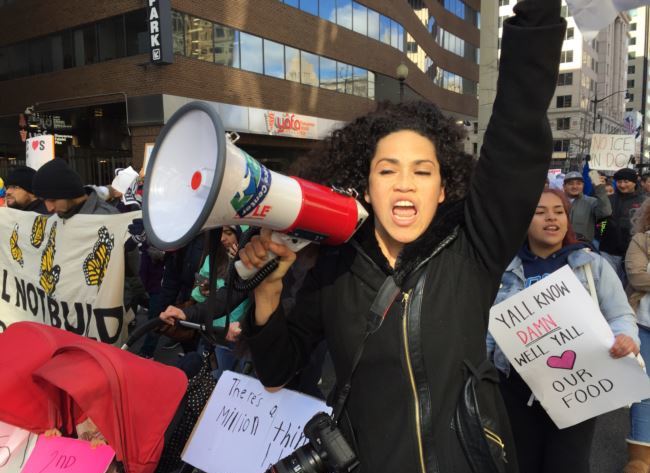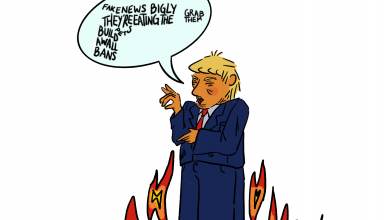Vigilance Still Matters in “Sanctuary Cities”

Image by VOA News via Wikimedia Commons
In the face of Trump’s anti-immigration rhetoric and executive orders, governments across liberal towns began to declare themselves “sanctuary cities.” Sanctuary cities vow to cut ties with ICE agents and deny local police the power to arrest immigrants based on their immigration status. Cities in New York, California, Washington, and other states have promised to keep immigrant families safe as they take on the title of a “sanctuary city.” However, for many cities, this is merely a title; becoming a sanctuary city does not ensure protection from federal raids, nor does it guarantee the safety of undocumented communities.
Opposing Trump’s call for increased deportations, Los Angeles Mayor Eric Garcetti stated LAPD would continue its decades-long practice of “not [enforcing] federal immigration laws.”
Seattle Mayor Ed Murray also responded to Trump, saying Seattle “would not be bullied” into complying with Trump’s anti-immigration laws.
Cities like Los Angeles and Seattle prove local governments offer promises they are unable to fulfill. These broken vows are rooted in liberal counties’ jail systems and the federal authority of ICE. While Trump’s executive order demands sanctuary cities comply with federal law or lose federal funding, the troubling flaw of sanctuary cities does not rest in the potential loss of federal money. Murray maintains he is willing to lose “every penny“ of federal funding in order to ensure the safety of undocumented immigrants. While funding is a worry, cities like Seattle are prepared to respond to potential fiscal repercussions.
Opposing Trump paints these liberal mayors as heroic figures willing to protect immigrants despite monetary risks. While their vocal opposition is important, it is crucial to underline where the promise of sanctuary falls short. It becomes easy for cities to blame federal powers for high rates of deportation, while claiming innocence in ensuing anti-immigrant policy. By pointing fingers at Washington, left-leaning cities, counties, or states absolve themselves of their responsibility in increased deportation rates.
Particularly, sanctuary cities remain complicit through the imprisonment of people on drug-related charges. While some liberal cities have decriminalized marijuana, many undocumented detainees jailed before the passing of new regulations, along with other detainees jailed for selling drugs, are at risk of deportation. The war on drugs has facilitated the arrest of many people particularly from communities of color due to minor drug offenses. Even in liberal cities, if immigrants are arrested due to policies that over criminalize drug offenses, their information is automatically sent to ICE agents. When arrested, fingerprints are sent to federal law enforcement agencies, who then submit a detainer request to the jail asking the jail to hold the undocumented detainee until ICE agents are ready to begin the deportation process. While sanctuary cities may refuse to adhere to the request, the transferring of information is already done upon the initial arrest. ICE agents are made aware of details, including housing information concerning the undocumented immigrant, regardless of whether the county jail chooses to hold the detainees.
Although they are not jailed on the basis of their citizenship status, they become at risk for deportation upon arrest. Consequently, deportation is dependent on the local imprisonment systems in these cities.
Over-criminalization of minor drug offenses is not the only catalyst for deportation. The reality that many sanctuary governments do not always mention is the federal power of ICE agents. Local governments struggle to oppose the existing presence of ICE throughout communities. Because they are federal agents, and thus their power overshadows that of local officials, undocumented immigrants still face a high risk of deportation.
On Feb. 28, the inability of sanctuary cities to facilitate protection was witnessed in Highland Park when ICE agents arrested Romulo Avelica-Gonzalez while he dropped his two daughters off at school. This arrest represents the existing threat that faces undocumented communities even in cities that claim to protect undocumented immigrants.
The false promises of these cities are again seen in the case of Daniel Ramirez Medina, a DREAMer residing in Seattle. Given his status as a DREAMer, Ramirez is granted deferred action, and is supposed to be allowed stay in the United States as long as he adheres to local law. Although there was not a reason to arrest Ramirez, ICE agents still did, along with his father. These cases prove the inadequacy in protecting undocumented immigrants and families; risks of deportation do not disappear simply by calling one’s city a “sanctuary.”
Making a city a sanctuary for undocumented people requires more than just the title. While promises to protect undocumented communities are appreciated, it is crucial for people to remain vigilant. A sanctuary city does not guarantee protection from the threat of deportation, as ICE agents are still deeply connected to sanctuary localities. It becomes easy to blindly place trust on local governments, but it is always necessary to be alert. Minimizing deportation requires vigilance on behalf of both the White House and local city hall.




